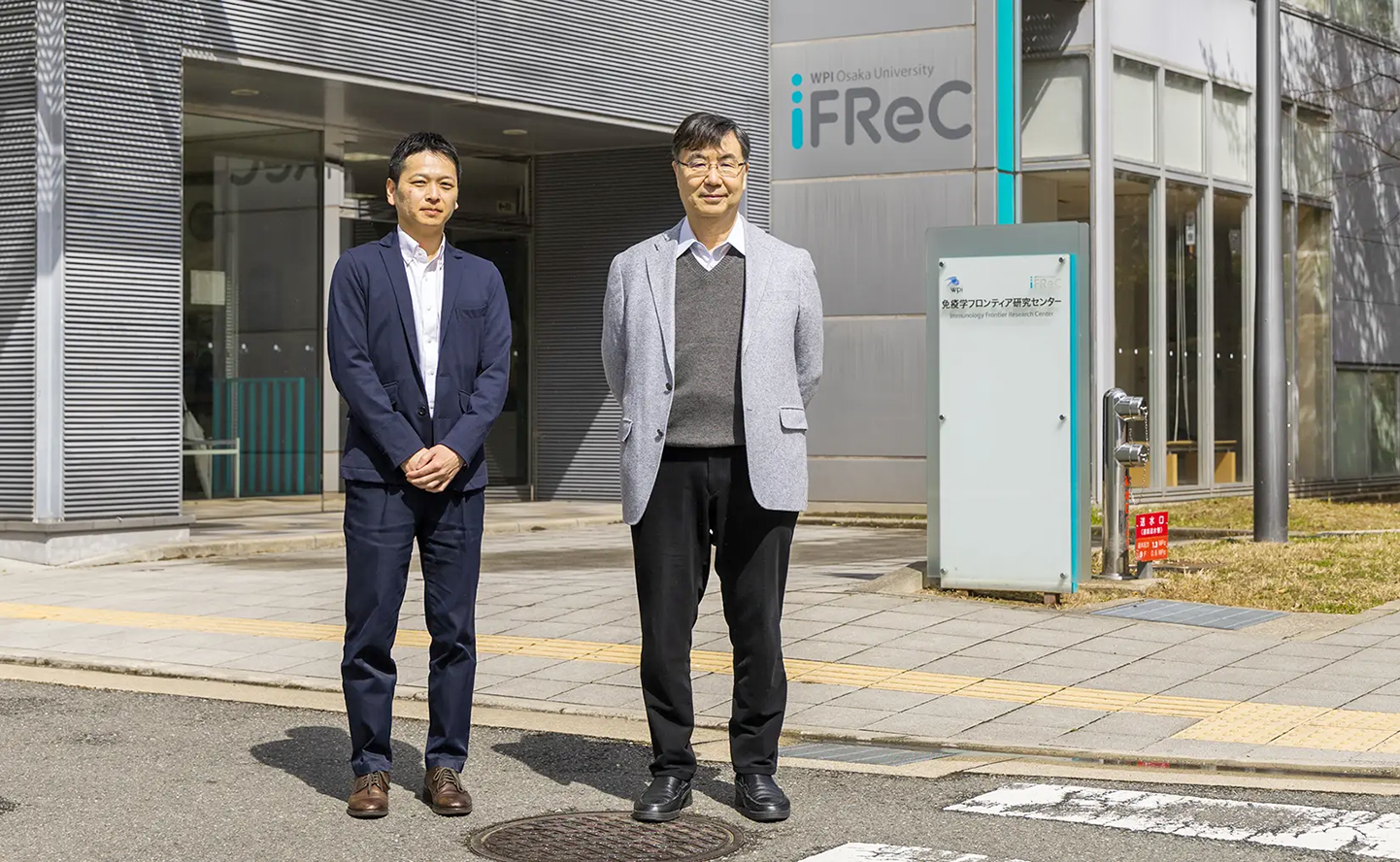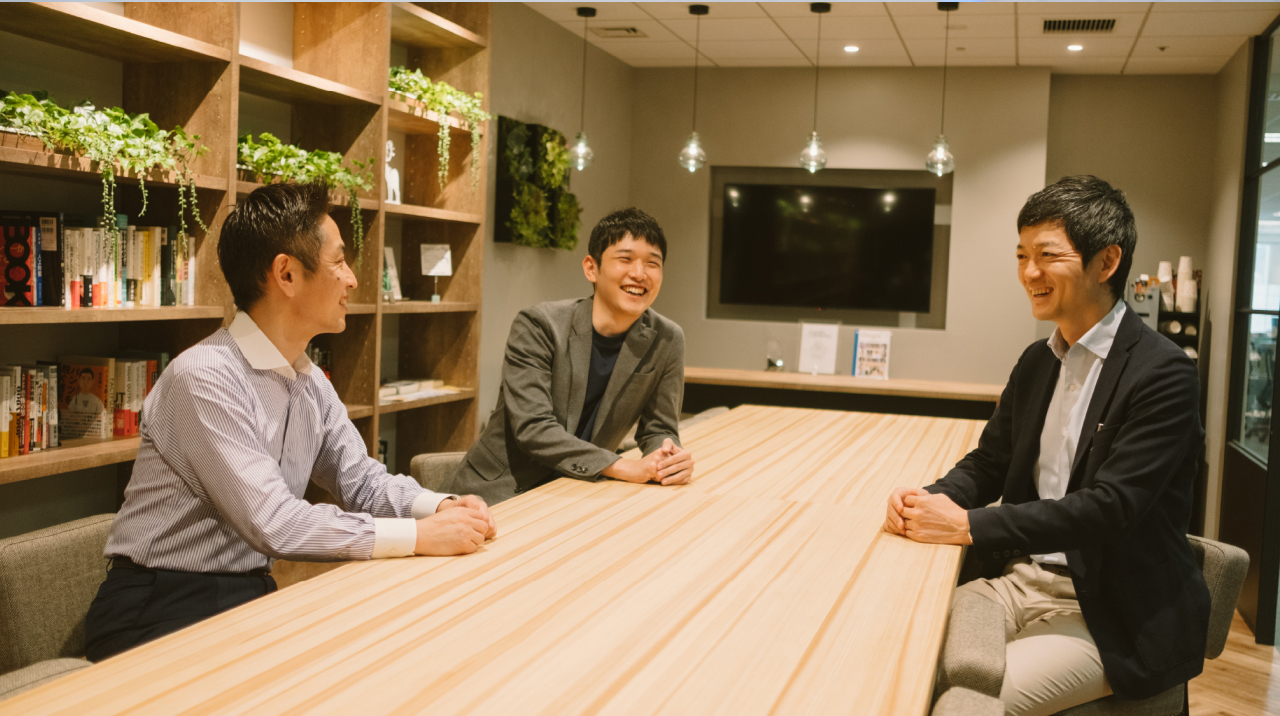Pharmaceutical Development Accelerated with Real-world data (RWD) - Taking on the Challenge of Developing Acute-phase Therapeutic Drugs in Collaboration with MeDiCU, Inc.
- R&D
- DX
- External Experts

Chugai Pharmaceutical utilizes real-world data (RWD)* for increased efficiency and advancement in the clinical development of new drugs, verification of drug values, and a deeper understanding of diseases. To address this issue, we invited Mr. Kinoshita, CEO of MeDiCU, Inc., a company that provides a large multi-institutional ICU database (OneICU), to discuss the essential elements of using RWD in business. Chugai Pharmaceutical's data scientist Keisuke Tsukada and clinical scientist Ayumi Hasegawa spoke with Mr. Kinoshita the potential and challenges of pharmaceutical development utilizing RWD for acute-phase diseases.
*A collective term for medical data obtained from routine clinical practice. RWD include claims data, DPC data, electronic medical record data, health checkup data, patient registry data, and data generated from wearable devices. Thanks to recent advancements in medical IT, it has becomepossible to collect and analyze vast amounts of RWD.
Click here for information regarding Chugai Pharmaceutical’s “Utilization of Real-World Data”
*Reproduced from Chugai Pharmaceutical’s official Note page (https://note.chugai-pharm.co.jp/) Article details and employee positions are current as of March 2025
Participant Profile
Takahiro Kinoshita (top image, center)
CEO, MeDiCU, Inc.
After nine years of clinical experience at a critical care medical center in Osaka, Mr. Kinoshita enrolled in the Harvard T.H. Chan School of Public Health in 2019.
In 2020, he received the Gareth M. Green Award, given to an outstanding student graduating from the Havard T. H. Chan School of Public Health.
Mr. Kinoshita then joined Philips Research North America, where he was engaged in the development of medical AI in ICUs.
In 2023, he returned to Japan and founded MeDiCU, Inc.
Keisuke Tsukada (top image, left)
A member of the Data Science Group, Digital Solution Department, Digital Transformation Unit, Chugai Pharmaceutical.
As a data scientist, he performs RWD analysis in the early stage of development.
He also contributes to the evaluation and potential introduction of RWD to support development strategy formulation.
Ayumi Hasegawa (top image, right)
A member of the Early Development Group IV, Early Clinical Development Department, Translational Research Division, Chugai Pharmaceutical.
As a clinical scientist, she develops strategies for Chugai originated products and clinical study protocol.
Efforts to Utilize RWD and Associated Challenges
Hasegawa As a clinical scientist, I am involved in projects targeting acute-phase diseases and use RWD to develop clinical study protocol. When defining the treatment duration, we use RWD to obtain prognosis-related information about patients targeted for the drug, such as their characteristics, duration of hospital stay, onset time of complications and timing of hospital discharge, to establish an appropriate treatment duration for clinical trials. In addition, we use RWD to predict treatment outcomes and prognoses in specific patient populations to refine the research hypotheses and sample size estimation.
However, when applying RWD to product development, it is difficult to determine whether the data are sufficiently reliable.
In a clinical study, treatment is administered to patients who satisfy the inclusion/exclusion criteria according to a specific schedule under the protocol. However, in real-world settings, where treatment is administered to patients from various backgrounds, and not necessarily according to a strictly controlled schedule, the data obtained may not align with other corresponding datasets.
Tsukada I have also experienced the challenge of verifying the consistency between RWD and published literature/other information several times.
When the incidence of a specific disease differs greatly between the literature and RWD, the reliability of the data is questionable. Therefore, instead of basing our decisions solely on data, we need to make more cautious decisions by thoroughly discussing with in-house medical doctors or clinical scientists, such as Hasegawa-san, to determine why the discrepancy occurs and whether the data are reliable enough for use by clinical scientists. One time, we verified the consistency of the data only after interpreting the analysis results by referring to a small note in a review paper. Data reliability and clinical interpretation validity are major issues in the application of RWD to product development.
Kinoshita As both of you have just said, the utilization of RWD in business depends solely on how accurately the data can be gathered in large amounts. OneICU, established by MeDiCU, is a “large intensive care unit (ICU) database” in which minute-by-minute vital signs data and intervention data are integrated with timestamps. We attempt to overcome the two major hurdles when building a conventional database based on electronic medical records.
What Led to the Collaborative Project - the Strength of OneICU
Kinoshita The first hurdle is that electronic medical records are databases of information needed to calculate medical costs; therefore, they do not necessarily come in a format that helps reconstruct a series of events that occur in clinical settings.
Electronic medical records were not used in OneICU. Instead, significant focus is placed on how to output only the parts that can be used to create medical timelines for the database. Payment information is recorded on a daily timescale, but the conditions of acute-phase patients in the ICU and critical care unit can change minute by minute. Therefore, daily drug records provided by payment information do not aid in the reconstruction of clinical situations. We extracted more detailed, minute-by-minute records from critical care information systems. For blood collection, we obtained laboratory results with not just the date but also the exact time at which it was performed. Using these data, we aimed to build a database that helps to retrace timelines in critical care and ICU settings. As described thus far, OneICU is distinguished as a database built by healthcare professionals with a clear intention of capturing the real-world clinical experiences of patients.
Second, each medical institution uses a different electronic recording system, making it difficult to integrate data from multiple institutions.
OneICU is compatible with the data formats of all four critical care information system vendors in Japan.
However, inconsistencies in the terminology used for the same diseases among doctors will most likely continue to exist. For example, the Japanese name for “subarachnoid hemorrhage” can be partially written in Hiragana or Katakana. It is also abbreviated as SAH in English. Converting all these data into unified data for the same disease is essential as long as we use data from electronic medical records. We dedicated approximately a year to engineering a system that uses proprietary natural language processing technology to consolidate inconsistent terminology into a single standard and ultimately link it to classification codes for disease names, known as ICD codes. Data entered by various healthcare professionals at various medical institutions can be provided in the same format, which is the strength of OneICU. As of January 2025, 26 medical institutions have signed participation agreements across Japan. We obtained data from 26 institutions over the last year, which was calculated as one institution every two weeks. This number continues to increase at almost the same rate.
For the Development of Treatment Drugs for Acute-phase Diseases
Tsukada Indeed, its high temporal resolution, such as time tracking and minute-by-minute data, was a major deciding factor for collaboration. To date, we have commonly used RWD based on payment information. Although the large number of patients made scaling easy, these data were recorded on a daily timescale, and we could not access certain data, such as lab results, that can change quickly. Patient conditions during the acute phase or following major surgery can change more frequently than once a day, and this information is very important in terms of treatment plans. This information will play a vital role in the development of pharmaceuticals.
Hasegawa Depending on the disease characteristics, a high temporal resolution is crucial. In acute-phase diseases, changes in lab values measured every few hours can reflect changes in disease severity. However, many databases lack the specific lab values needed to determine severity, which has sometimes prevented us from identifying a target patient population. Obtaining information about changes in lab values every few hours via OneICU will enable us to identify more precise target patient populations. I hope that understanding specific patient characteristics will lead to increased efficiency and advancements in our pharmaceutical development process.
For Drug Development with Global Markets in Mind
Hasegawa At Chugai Pharmaceutical, we undertake the development of candidate products with global development. In this case, OneICU is a domestic database, so how should we extrapolate overseas data?
Kinoshita This is an important point to note. OneICU currently contains only domestic data, and thus, its information and data cannot be handled exactly as those from overseas. Many institutions participating in OneICU are university hospitals and core hospitals in cities, and they provide first-rate medical care in compliance with specific guidelines. For this reason, I believe that none of these institutions would deviate significantly from global treatment standards. In addition, one way to determine the actual differences in clinical practice is to compare them with overseas ICU databases.
Expectations for the New Project
Kinoshita MeDiCU’s mission is to maximize the value of medical care using data, and this is something that I have always pursued since my days as a clinician. Particularly in acute-phase diseases, a patient’s condition can change rapidly, and a doctor’s minute-by-minute decisions and appropriate drug selection can have a significant impact on patient prognosis.
I am excited about OneICU participating in this drug development project to improve patient prognosis.
Tsukada I find it rewarding to think about data science approaches using data that offer a detailed look at patients’ fast-changing conditions. For specific diseases, new types of RWD have been made available, allowing us to use exact dosage information and high-temporal-resolution data that we could not access before. I would like to make full use of these data characteristics and, as a data scientist, contribute to development projects for advanced pharmaceutical products.
Hasegawa Many acute-phase diseases are serious. Therefore, when carrying out a development project for a new disease where the company lacks expertise or a disease with high utilize RWD as a new tool and improve the probability of success of clinical trials. While utilizing OneICU, I would like us to provide inputs to each other to help mature the database. In addition, I would like to apply the experience and knowledge acquired through this project analysis to future in-house development projects.
Kinoshita A database evolves by repeatedly utilizing and improving it. Further improvement of the usability of OneICU through this project would be useful.



